The 12 Different Types of Blog Posts (and How to Use Them)
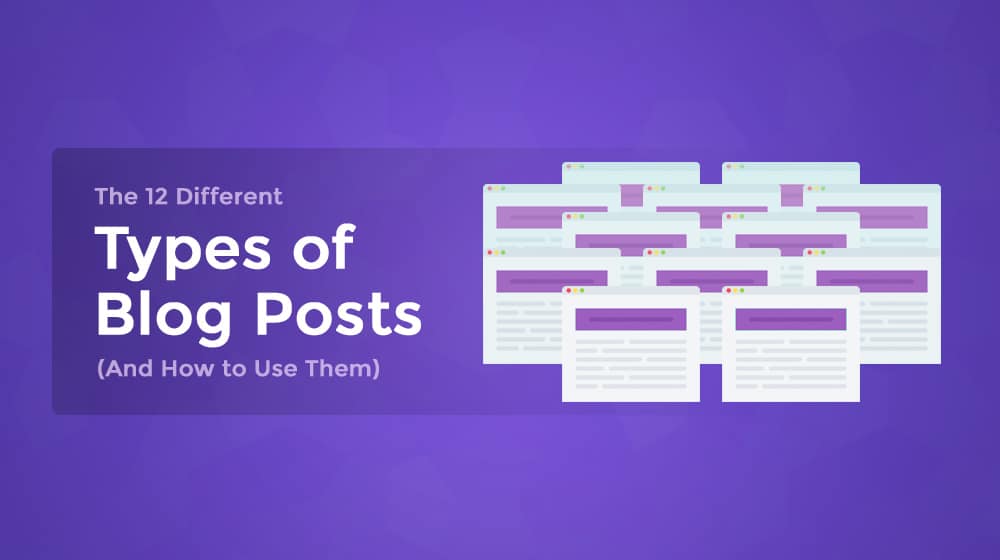
There are hundreds of different ways of dividing the various types of content you can create for a blog. Every content creation company has a style and a specialty, with variations in style, quality, and outlook. My company is no different, of course.
I read a handful of different posts on this subject, but they all missed many of the points I had hoped to see.
After some careful consideration, I've determined that twelve primary types of blog content encompass just about every blog post on the internet. If you think I missed one that doesn't fit under one of these categories, feel free to let me know in the comments section below.
What I've decided to do here is to share my perspective. The twelve kinds of content I've identified each have their unique uses, purposes, focuses, and value. Learning how and when to use a given type of content is not only important but critical to the success of your blog.
I'm going to give you a rundown of all of them, from the least valuable to the most valuable, and give you ideas on how to use them.
 30 Second Summary
30 Second Summary
Different types of blog content serve various purposes and hold unique values. Twelve identified types include press releases, announcements, media reports, personal content, news stories, local stories, clickbait, roundup posts, viral content, linkbait, evergreen content, and skyscraper content. The value of each type varies, from press releases that often undervalue a blog, to skyscraper content that stands as the pinnacle of value, towering over other forms. The important to a successful blog lies in finding the right balance between resource-heavy and routine content.
1. Press Releases
Press releases are a kind of content some people love for marketing. I've personally never found them to be of much use. A press release is more made for news from a Fortune 500 company, not a random small-scale blog looking to promote their services.
The problem with press releases is how everyone seems to use them. The ideal use case for a press release is to send it to news agencies. Those news agencies take the release and either publish it as-is or use it as a basis for their reporting, writing a unique story about the subject. It's one part informational packet, one part call to action, and one part invitation for reporters to come and say hello.
The issue is that, for smaller blogs and businesses, very few of those news agencies care. Even mid-sized businesses have trouble getting attention for anything short of the most novel, disruptive, or inventive news.
Mostly other business owners submitting press releases. What about all of those big sites that they claim to submit to, like USA Today? It gets stuffed away in their classifieds section.

Demand sprang up for sites that would accept and publish press releases, often charging for submissions. Those sites are businesses you've never heard of writing content that doesn't matter for an audience that doesn't care. Who even visits these sites?
If you want to use a press release, you certainly can give it a try, but I don't recommend it. If you're going to publish one on your site, consider no-indexing it and putting it off in its category so it won't interfere with your SEO.
2. Announcements
Announcements are sort of similar to press releases, except you don't go out and submit them to other sites. They're relevant to your audience, but not relevant to anyone who isn't in your audience. Announcements can be notifications of a new product release, a company rebranding, a new sale, updates on a security breach, and so on.
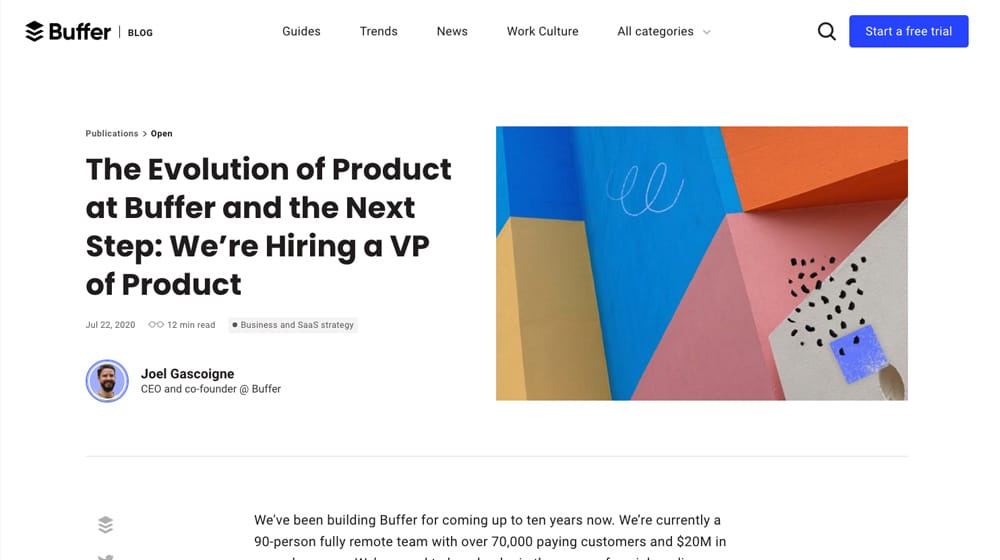
Announcements have value in specific situations, generally for notifying your readers of something important. If your company is rebranding, if you're closing for a holiday, or if you're retiring an old product, your existing customers want to know. If you're announcing a new product, you might be able to promote your announcement to a wider audience, or you might not.
Critically, no one searching Google for something is going to prioritize visiting your announcements. Very rarely do they gain any search traction; they're more meant to be pinned notifications on your blog.
Announcements are useful, I'm not saying you shouldn't write them. Just recognize that they aren't there for SEO. You can add the noindex tag to them and never see the difference. Write them, pin them to the top of your site, link to them in a Hello Bar or a lightbox if you want, and post them on your social media feeds. Other than that, you don't need to care about them.
3. Media Reports
Media reports are a particular kind of content I see in a few industries, but not everywhere. Usually, it's part of the more business-oriented brands and companies, as well as journalists. What do I mean?
A media report is something like, say, a gallery of photos taken at a trade show. A reporter or representative for a business goes to a trade show, writes about their impressions and their interactions while there, and essentially "reviews" the trade show. The end result is a piece of content that is full of pictures that most people won't care about, with what basically amounts to a personal diary of the event.

These can be useful in exactly one situation: when you're trying to convince your audience to attend the trade show next year. By capturing photos and writing about the value you got at the show, the cool people you met, and the networking deals you made, you basically poke and prod at your audience and say "Do you see what you're missing out on?" It inspires some level of FOMO and helps encourage people to plan to attend the next event.
Use them if you have a specific goal for them, but if you don't, don't worry about it.
4. Personal Content
Personal content tends to be the realm of personal blogs, family blogs, and blogs where the "brand" is an individual. Cooking blogs where the owner posts about their personal life, family blogs meant primarily for sharing with other family members, and the old-school LiveJournal-style content all fall into this category.

If your brand is built around an individual, and people in your audience care about your personal life, then this kind of content can be valuable. It's a good way to foster engagement with an audience and build that feeling of knowing you, even if you've never paid much attention to the individual users who read your posts.
The exception is as part of an employer brand, to humanize your brand and your employees, to help attract talented job applicants who want a glimpse into your culture.
Small businesses with a local focus can occasionally benefit from this kind of content as well. If your business is a fixture of your community, people local to you might be interested in more personal aspects of the people behind the brand, and you can get some engagement out of it. Otherwise, it's not a really useful form of content for a business.
5. News Content
News is the ultimate in time-sensitive content. I'm not talking about business news, here. I mean news as in what you'd see in your industry's section of Forbes or on an industry news site. Stuff that affects the industry as a whole, or your niche, or your audience.
You can't do it with just one person; you generally need a whole staff of reporters watching hundreds of sources of information, with contacts in businesses, and insight that can help them identify the difference between rumors and leaks.

There's also a ton of competition for news content, including massive global brands with thousands of reporters publishing hundreds of pieces of content per day. If you don't have significant resources to invest in starting an online newspaper and publishing a massive amount of content each day, I don't recommend trying it.
The one way a smaller blog with no resources can leverage news content is by adding unique insight to it. Rather than just covering the news, add your perspective to it and discuss what the news means for your company and your customers. That way there's more value to it than just being the people reporting because there will always be bigger people reporting.
We create blog content that converts - not just for ourselves, but for our clients, too.
We pick blog topics like hedge funds pick stocks. Then, we create articles that are 10x better to earn the top spot.
Content marketing has two ingredients - content and marketing. We've earned our black belts in both.
6. Local Content
Local content is where we start getting into some more valuable kinds of content, but it's still difficult to do in a way that is truly valuable to your business. There are a lot of local-specialized websites out there, but they tend to make "local content" their business model. They aren't businesses looking to drum up local traffic.

Local content, in my experience, is usually global content with local keywords layered on top like a costume. I could write an article about how to write great blog posts in Boston, but nothing I write would be really attuned to a Boston audience. A pest control company can write content about controlling termites, but that's not relevant specifically to their area, it's relevant to anywhere that termites live.
A company renting party supplies, doing landscaping, or offering in-person services really has no recourse but to target local keywords and hope they capture a local audience. Brands like mine, where I can provide my service to anyone, don't need to focus on local content, or even produce it at all.
7. Clickbait
Clickbait content is the black sheep of the content world. We all toe the line when creating content. Think about some of the common tips you get for choosing topics and headlines. Make them emotional. Use power words. Invoke curiosity and leverage the curiosity gap.
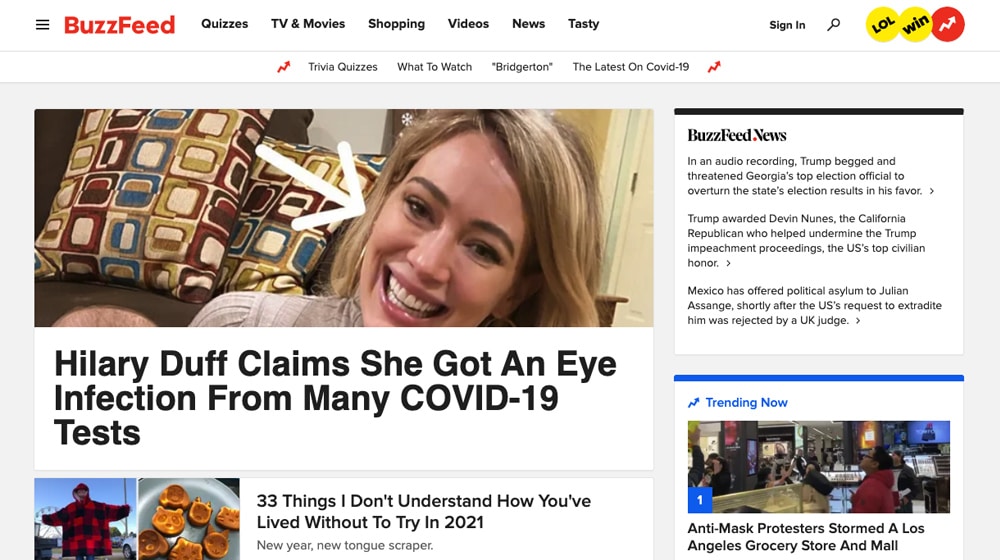
It's all true, of course, but doing it too much is what leads to the Buzzfeed-style clickbait that invaded social media for a while before even Facebook got tired of it and put rules in place to penalize it.
What I'm referring to as clickbait is the "good" clickbait. It's the content that uses clickbait techniques but doesn't quite cross the line into meaningless gif dumps and piles of Reddit screenshots.
8. Roundup Posts
Roundup posts are a sort of "directory" style post. They take a topic and aggregate content about that topic.
They come in a few flavors, all of which have their benefits and drawbacks.
- Resource Roundups are lists of tools and resources aimed at helping users do something. For example, my post on 20 tools to help make landing pages is a resource roundup. These posts are a decent form of evergreen content, but they have a fairly low potential to go viral, and they need to be kept up to date as tools change.
- Expert Roundups are a more common kind of roundup post. These take a given topic and seek out quotes or advice from experts in the industry, aggregating all of the quotes. Experts like contributing to them because they get a link in exchange for answering an email. Bloggers like them because they can bring in a ton of links and traffic, and often the experts quoted in the post will help share and promote the post.
The biggest issue with expert roundups is time-sensitivity.

Most of the time, the topic you'll be asking is something relevant to the current time you're writing it, so after a year or so, it might fall out of fashion. Evergreen roundups are possible but tricky. Neil Patel has some good advice about them here.
Up until this year, using the term viral to describe the spread of content was mostly a metaphor. 2020 has shown us exactly what viral means, with the whole pandemic thing, and it's exactly the effect we try to replicate with content. That level of spread and that level of awareness is the pinnacle of viral content. Sounds a little sinister now that we're living through it, though.
The more time-sensitive a piece of content is, the more likely it is to go viral because people share it more readily. Conversely, the more evergreen it is, the fewer pressure people have to share it, so the harder it is to go viral.
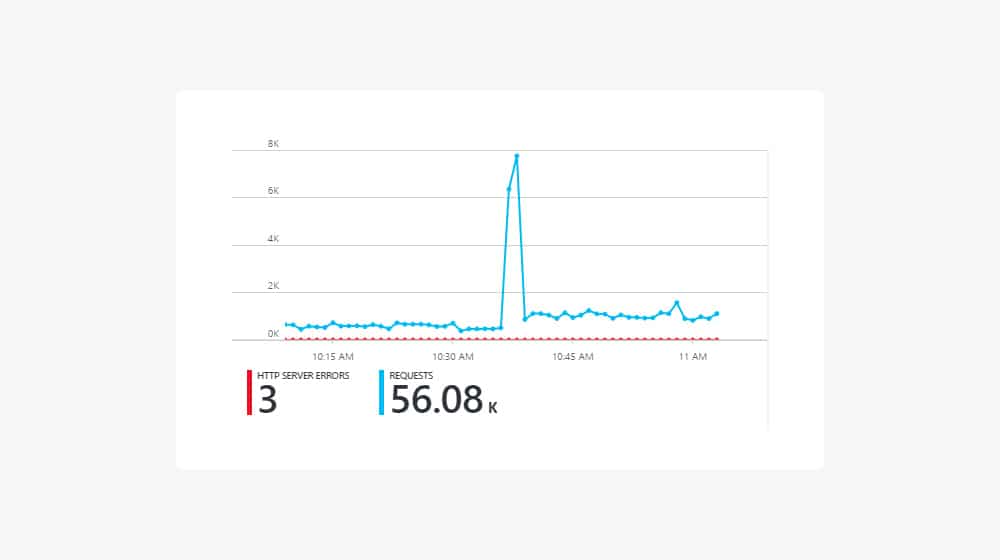
Writing content specifically to go viral is possible, but very difficult. Buzzfeed is the master of viral content, and they have a very specific formula they adhere to and leverage to extract value from going viral.
Trying to intentionally go viral is like trying to capture lightning in a bottle. More so because lightning can strike without you attracting it. A post can go viral when you never intended it to. Still, you can study what makes content go viral and write content with the best possible chances.
10. Linkbait
I mentioned linkbait a moment ago. It's some of the most valuable content you can produce, in terms of SEO. Linkbait is content designed to be useful, to get other blog owners to link to it, share it, promote it, reference it, and mention it.
A famous example in the marketing industry is the Backlinko search ranking factors guide. It's regularly updated, very thorough, and has over 24,000 backlinks at the time of writing.
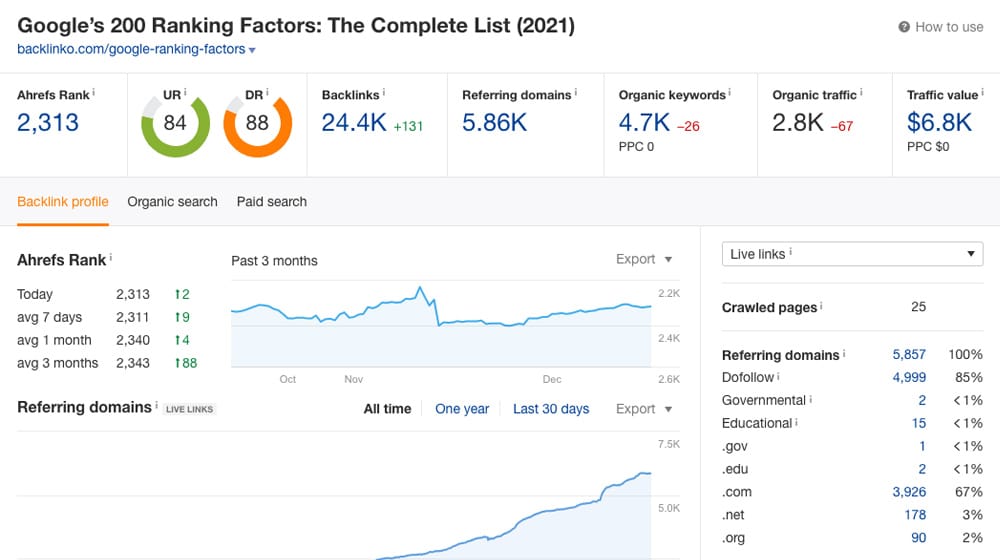
It can attract links through being valuable in the immediate sense, by giving users a free download for a tool or resource. It can attract links through novelty, which is what infographics typically do.
In my experience, linkbait is some of the best content to focus on producing, because links are the bread and butter of SEO value. A good linkbait post is one of the best things you can do to boost your search ranking across the board.
11. Evergreen Content
This kind of content is essentially the exact opposite of news content.
Sometimes it's because it's a piece of information that doesn't change over time. A guide to changing the battery in a car key fob for a 2010 Mazda 6 only needs to be written once, and it's valuable for as long as there are 2010 Mazdas on the road.
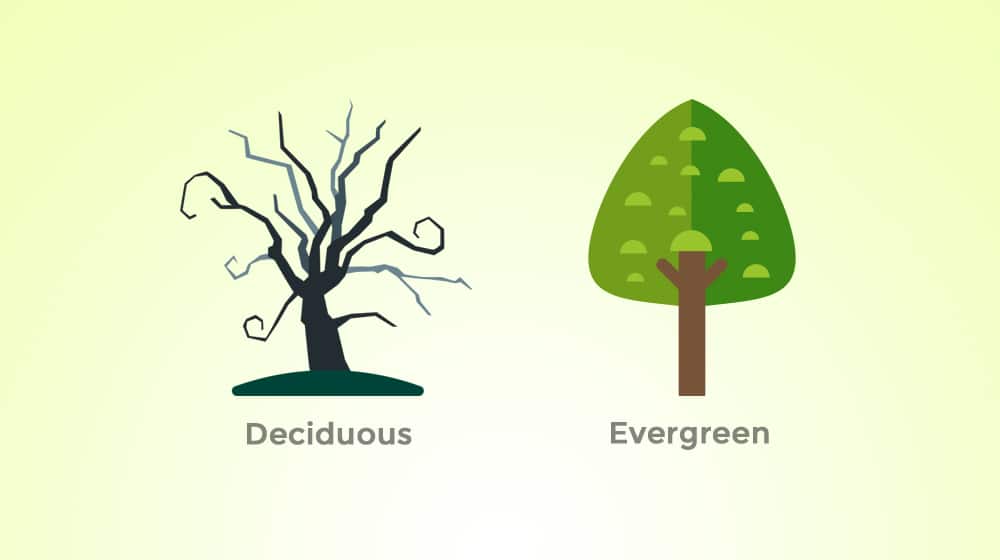
Sometimes it's because it's a piece of content you strive to keep up to date. The aforementioned Backlinko guide has been actively updated for years, and every time Google updates its algorithm, the guide is updated as well. The same goes for something like the Moz Google Update History page. It only gets more valuable as time goes on.
12. Skyscraper Content
As we promised, we saved the best type of content for last.
Not just better, though; so much better than the other post that the competition doesn't even want to compete. Arguably, the Backlinko guide I mentioned fits this description well. No one else is likely to even try to do the same thing, because they'd have to out-do the most comprehensive guide on the subject ever published. It's like writing a newer and better version of a textbook while competing with the textbook's author.
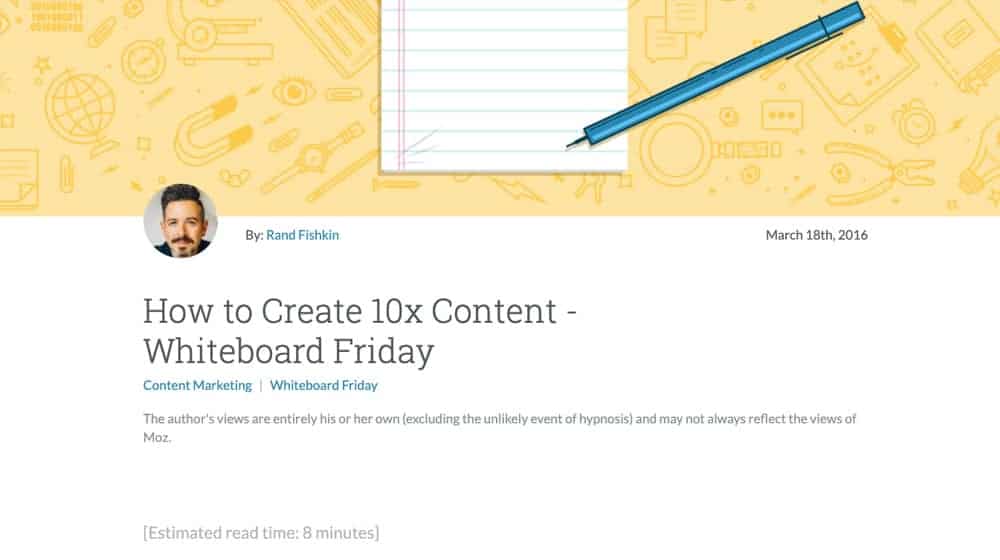
Skyscraper content is difficult and time-consuming to produce, but it's generally extremely valuable when you do. It's a core kind of content that differentiates mediocre blogs from big-name players. If you can produce it, it's extremely valuable. The best part is, even mediocre skyscraper content is still good evergreen content, so it's always a good investment.
So there you have it; my twelve kinds of content. Producing the most valuable kinds of content most frequently, and filling in gaps with other kinds of content as they need to serve a purpose, is the way to go. Finding the right balance of resource-intensive content and bread-and-butter content is up to you. If you're not sure what content to start with or you're not able to write it yourself, you could always hire an expert like us to help you.



 30 Second Summary
30 Second Summary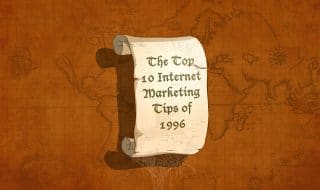


January 27, 2022 at 2:48 pm
We've mainly been prioritizing evergreen content and it's really doing wonders for our traffic. Haven't heard of the concept of skyscraper content yet though. We'll consider that next time.
January 28, 2022 at 5:21 pm
Thanks, Sam!
In many ways, it's industry-specific. Some industries are so narrow that just about any content can rank.
Others are so competitive that you'll need to write thousands of words and create an article that is 10x better in every way for it to surface.
It's also a great way to future-proof your content. When you create skyscraper content, you raise the bar and make it much more difficult for people to create something better and outrank you.
April 04, 2022 at 7:14 pm
These are great ideas. Do you have more tips on how to consistently make good evergreen content?
April 29, 2022 at 1:51 pm
Hey Cindy!
I wrote a full guide on the subject here: https://www.contentpowered.com/blog/evergreen-blog-ideas-examples/
April 19, 2022 at 10:44 pm
I've shied away from roundups because of their time-sensitivity. I didn't think it was possible to have evergreen roundups but I'm gonna look into it. Thanks.
April 29, 2022 at 1:37 pm
Hey Kerri!
What I've found to be the best method is to give contributors a week to respond and then take the best responses from that batch.
This strategy gives you time to write the rest of the post, create images, optimize it, and when it's about ready to publish, you can collect, polish, and add all of your contributor's answers into your roundup post.
It's better to focus on evergreen topics, especially when putting all of that effort into a resource!